#Pigmentation reduction method
Explore tagged Tumblr posts
Text
Getting Brighter Skin in Hyderabad: Easy Skin Lightening Treatments
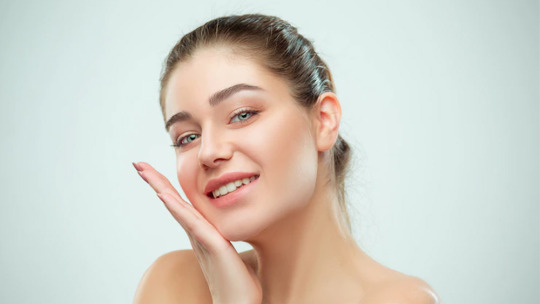
In Hyderabad, where everyone loves having beautiful skin, there are simple ways to make your skin glow. Let's explore some easy and effective skin lightening treatments that people in the city love.
Chemical Peels:
Chemical peels are like magic potions for your skin in Hyderabad. They use special liquids to remove old skin, making it look fresh and bright. It's a bit like giving your skin a makeover, and many people in Hyderabad love how it helps with dark spots.
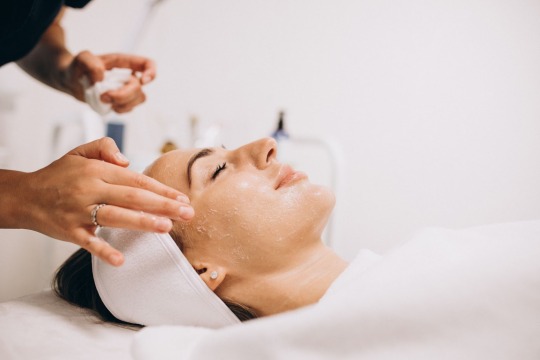
Laser Skin Treatment:
Laser treatment is like using a superhero light to fix your skin. The laser targets dark spots and makes your skin look fantastic. Lots of people in Hyderabad are choosing this treatment because it's quick and works wonders.
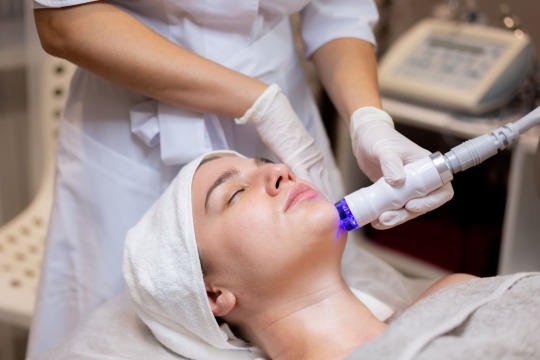
Microdermabrasion:
Microdermabrasion is like giving your skin a gentle scrub. Tiny crystals make your skin smoother and help with dark spots. People in Hyderabad really like this treatment because it makes their skin feel soft and look brighter.
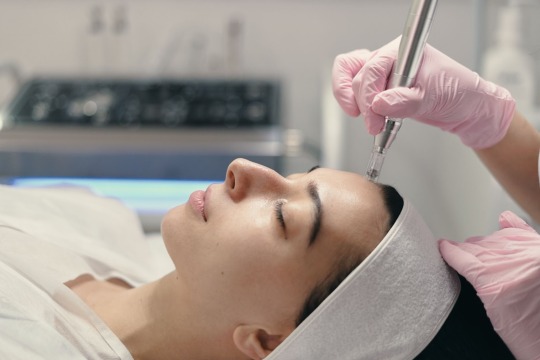
Creams from the Doctor:
Sometimes, doctors in Hyderabad give special creams to put on your skin. These creams have powerful ingredients that can help with dark spots. It's like having a secret weapon for your skin that your doctor gives you.
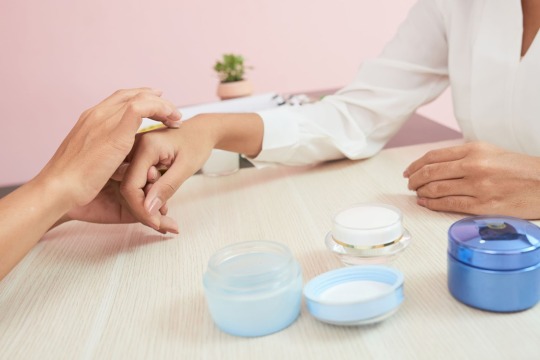
Freezing Treatment:
Freezing treatment is a cool way to deal with dark spots. It freezes them away, and people in Hyderabad like it because it's quick and works well for small spots.
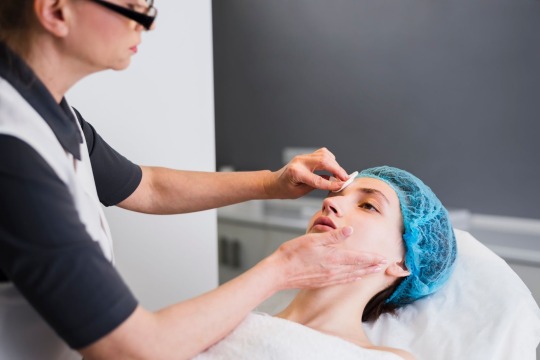
PRP Therapy:
PRP therapy is like giving your skin a boost from your own blood. They take a little bit of your blood, do some magic to it, and put it back on your skin. It's becoming popular in Hyderabad because it makes your skin look fresh and bright.
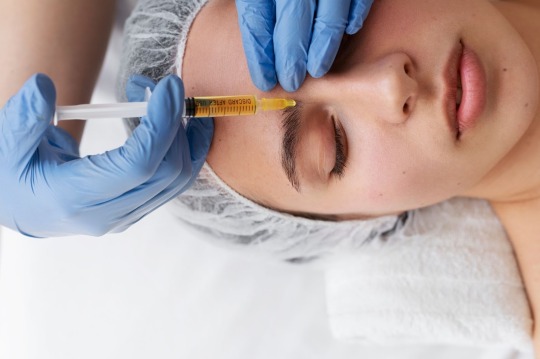
Choosing the Right Treatment:
Before trying any treatment in Hyderabad, it's important to talk to a skin expert. They will check your skin and help you choose the best treatment. Everyone's skin is different, so it's like finding the perfect fit for your skin.

Conclusion:
Hyderabad is a city where people love taking care of their skin. With easy treatments like chemical peels, lasers, and creams from the doctor, getting brighter skin is simple. Just talk to a skin expert, and soon your skin will be glowing like the beautiful city of Hyderabad! And for those looking for trusted skincare solutions, Dr. Venus is a brand that many in Hyderabad rely on for effective and gentle products. Consider exploring their range for a skincare routine that aligns perfectly with the charm of Hyderabad and leaves your skin feeling refreshed and radiant. Book an appointment now to start your journey towards healthier and brighter skin!
#Hyperpigmentation treatment#Skin whitening techniques#Pigmentation reduction method#Melasma treatment options#Lightening dark spots#Skin tone correction#Dermatological lightening treatments#Chemical peels for pigmentation#Laser skin lightening#Topical skin lighteners#Natural skin whitening remedies#Depigmenting agents#Vitamin C serums for brightening#Hydroquinone alternatives#Glycolic acid for pigmentation#Kojic acid products#Azelaic acid for skin lightening#Microdermabrasion for hyperpigmentation#Retinoids for even skin tone#Skin lightening creams#Intense pulsed light (IPL) therapy#Laser resurfacing for pigmentation#Dark spot correctors#Professional skin lightening treatments
0 notes
Text
Simplified Guide to Skin Whitening Injections: Key Facts
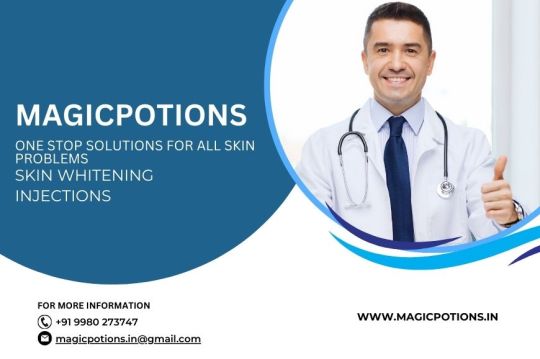
Skin whitening injections, primarily composed of Glutathione, have surged in popularity due to their potential to enhance skin tone and reduce hyperpigmentation. These intravenous skin lightening treatments are often combined with other components like ascorbic acid injections, alpha-lipoic acid for skin lightening, and Vitamin C to boost the whitening effects. The role of Vitamin C in skin whitening is well-documented, with many proponents pointing to its antioxidant properties that detoxify the skin, enhancing its brightness. Similarly, collagen is believed to contribute to skin brightness, while other antioxidants used in the procedure further help in skin lightening. To ensure safety, many individuals are turning to FDA-approved skin whitening methods and natural skin brightening techniques that make use of melanin inhibitors and whitening boosters. Additionally, when aiming to address issues of uneven skin tone or dark spots, it's imperative to choose safe skin lightening injections that effectively treat hyperpigmentation without causing harm.
#Glutathione injections#Skin lightening treatments#Intravenous skin whitening#Skin pigmentation reduction#Melanin inhibitors#Side effects of skin lightening injections#Benefits of skin whitening shots#Natural skin brightening#Vitamin C injections for skin#Collagen and skin lightening#Safe skin bleaching methods#Hyperpigmentation treatments#skin whitening injections
0 notes
Text
Understanding Laser-Based Hair Reduction (LBHR): A Tailored Solution for PCOS
Living with PCOS often means managing a range of challenging symptoms, including hirsutism, or excessive hair growth. For many of us, finding a reliable and long-term solution to reduce unwanted hair feels like an endless journey. Laser-Based Hair Reduction (LBHR) stands out as a promising option—especially for those grappling with the persistent, stubborn hair growth that accompanies PCOS.
LBHR uses advanced technology to target the hair follicle beneath the surface of the skin, addressing the root cause rather than offering a temporary fix. This precision sets LBHR apart from traditional methods like shaving and waxing. This is why we recommend shaving before your session; we’re targeting the melanin in the root of the hair follicle rather than the hair shaft itself.
The Science Behind LBHR
Contrary to popular belief, LBHR does not target hair directly. Instead, it employs concentrated light to focus on the pigment within the hair follicle (Ibrahimi et al., 2011). The concept of selective photothermolysis (SPTL) is crucial here, as it selectively damages the hair follicle while protecting the surrounding skin, leading to long-term results (Ibrahimi et al., 2011).
The extended theory of SPTL suggests that laser treatment can effectively disrupt the stem cells and nutrients within the bulge of the hair follicles through the diffusion of heat, significantly delaying terminal hair growth (Ibrahimi et al., 2011). Unlike waxing or shaving, which offer temporary solutions, LBHR leads to lasting changes in hair growth patterns, making it particularly valuable for those with hirsutism (Kang et al., 2021).

The Theory Behind Laser Based Hair Reduction [Image]. (2019). DermaNu Clinic. https://www.dermanuclinic.com/blog/laser-hair-removal-and-how-does-it-work.aspx
Why LBHR is a Game-Changer for Managing PCOS Symptoms
For those of us with PCOS, excess hair growth can feel overwhelming and exhausting. We’ve already discussed how hormonal imbalances, particularly elevated levels of androgens (male hormones), lead to hair that grows thicker and faster. While traditional hair removal methods like shaving or waxing may seem more accessible and cost-effective in the short term, they only provide temporary relief. These methods often require frequent maintenance—whether weekly or bi-weekly—which can quickly become burdensome.
LBHR offers a more targeted, long-term approach. One of its key advantages for people with PCOS is its ability to significantly reduce hair over time. By damaging the hair follicle and the cells responsible for regrowth, laser treatments decrease both the density and thickness of hair, impeding the rate of growth and leading to longer-lasting results.
Many of us with PCOS have noticed visible changes—hair that grows back slower, finer, and thinner after consistent laser sessions. Since a full hair growth cycle takes around a month, it’s important to schedule your initial treatments about four weeks apart to target hair during its active growth phase. While it’s impossible to pinpoint the exact phase each individual hair is in (as each one can be in a different phase), treating hair every four weeks increases the likelihood of targeting a significant portion during the anagen phase. This approach helps weaken the hair progressively, session by session.
Additional Benefits Beyond Hair Reduction
Skin Texture and Odour Management
In addition to reducing hair growth, LBHR helps improve skin texture and manage odour. For people with PCOS, hirsutism can sometimes result in rough skin, often known as “chicken skin” (keratosis pilaris). With less hair growth, the skin’s surface gradually smooths out over time.
LBHR also helps reduce body odour by minimising hair in areas where sweat and bacteria tend to accumulate. This can be especially helpful for those who struggle with odour related to excessive hair growth, as less hair means fewer places for moisture and bacteria to be trapped.
Minimises Ingrown Hairs
One of the major benefits of LBHR, particularly for individuals with PCOS, is the reduction of ingrown hairs. Unlike waxing or shaving, which can lead to ingrown hairs as the hair grows back, laser treatments target the hair follicle itself, thereby reducing the chances of hair growing incorrectly beneath the skin.
Time-Saving in the Long Run
While LBHR may require an initial commitment of several sessions, it ultimately saves time in the long run. People with PCOS often have to deal with daily or weekly maintenance using other methods, whereas LBHR significantly extends the period between hair regrowth, reducing the time and effort spent on hair removal.
Less Irritation
Unlike traditional methods like shaving, which can lead to irritation, razor burns, and cuts, or waxing, which can cause skin trauma, laser treatments tend to be gentler on the skin when performed by a trained clinician. This makes LBHR a great option for individuals with sensitive skin, including those dealing with PCOS-related sensitivity.
Improved Confidence and Emotional Wellbeing
For many with PCOS, excessive hair growth can be a source of insecurity. The long-term results from LBHR can contribute to improved self-confidence and emotional wellbeing, as it minimises the need for constant hair removal and reduces the psychological burden of managing hirsutism.
Weighing the Challenges of LBHR for PCOS
However, LBHR isn't without its challenges. The process requires multiple sessions over several months, which can be both time-consuming and costly. The financial commitment is often the largest barrier, especially since those with PCOS typically need to treat larger areas of the body where hair growth is most excessive. Depending on the severity of hirsutism and an individual’s hair type, results may vary. While I and many others with PCOS have experienced a reduction in hair growth, it’s crucial to understand that LBHR does not permanently remove hair. Rather, it reduces it, and hormonal fluctuations can still lead to regrowth. I know I’ve mentioned this before, and it may seem repetitive, but it’s frustrating to see how often LBHR is misadvertised as a permanent solution.
A specific challenge we've touched on previously—and which is essential to emphasize—is paradoxical hypertrichosis. This condition occurs when the heat from the laser stimulates hair growth in areas where it was previously sparse or absent. This is most likely to happen when non-hairy areas are treated or where the hair is finer and lighter. Since laser targets the pigment in the hair follicle, it can be less effective on finer hair, complicating proper targeting. If paradoxical hypertrichosis does occur, the only way to manage this unexpected hair growth is through continued treatments at higher settings. This underscores the importance of only treating areas where hair growth is already a concern and being cautious of clinics that offer full-body laser packages without proper consultation. While these packages may seem cheaper in the short term, they could lead to more frustration down the line.
It’s also important to address a common misconception, much like with shaving, that laser can increase hair growth in certain cases. Paradoxical hypertrichosis most often occurs on the face and neck for women, as well as the upper torso for men and individuals with hormonal imbalances. It’s more common than many realize, affecting up to 10% of laser clients, particularly those from ethnic backgrounds associated with darker and coarser hair. I wish someone had informed me about this earlier because, having started laser treatments at a young age, I’ve personally experienced hair growth on my back where I previously had very little. This has been a frustrating outcome, and I’m sharing this to ensure others don’t face the same situation unknowingly.
Making Informed Choices
As we navigate the complexities of LBHR, it’s essential to approach treatment with a well-informed perspective. While LBHR has proven to be a valuable option for many, understanding both its potential and limitations can empower individuals with PCOS to make the best decisions for their unique circumstances.
Education and Consultation
Before starting LBHR, thorough consultations with experienced clinicians are crucial. They can provide tailored advice based on individual hair types, skin tones, and specific needs. It’s also important to have open conversations about any concerns regarding paradoxical hypertrichosis and other potential side effects, especially how LBHR interacts with sun exposure and medications. This proactive approach ensures that you’re prepared for the process and can make necessary adjustments based on your body’s responses.
Realistic Expectations
Setting realistic expectations is key. While many individuals see significant improvements in hair density and texture, it’s essential to remember that each person’s experience can and will vary. Some may require fewer sessions, more sessions, or different settings to achieve their desired results. By acknowledging this variability, you can reduce the risk of frustration and disappointment as you embark on your hair reduction journey.
Holistic Approach to PCOS Management
Finally, it’s vital to view LBHR as part of a broader strategy for managing PCOS symptoms. Combining laser treatments with lifestyle changes and medical management can yield even more benefits. This holistic approach can help address not just excess hair growth but also other aspects of PCOS, such as hormonal imbalances and skin health.
While LBHR offers a promising solution for those grappling with the challenges of hirsutism due to PCOS, it’s crucial to remain educated, set realistic goals, and seek professional guidance. By doing so, you can navigate this journey with confidence, taking significant steps toward reclaiming your comfort and self-esteem. If, after following along, you decide that LBHR is not the right option for you, that’s completely understandable. The most important thing is having all the information needed to help you arrive at this conclusion.
Until next time 🤍
References
Ibrahimi, O. A., Avram, M. M., Hanke, C. W., Kilmer, S. L., & Anderson, R. R. (2011). Laser hair removal. Dermatologic Therapy, 24(1), 94-107. https://doi.org/10.1111/j.1529-8019.2010.01382.x
The Theory Behind Laser Based Hair Reduction [Image]. (2019). DermaNu Clinic. https://www.dermanuclinic.com/blog/laser-hair-removal-and-how-does-it-work.aspx
7 notes
·
View notes
Text
Unhurtful Laser Hair Elimination Techniques
Unhurtful laser hair removal techniques utilize advanced technology to reduce discomfort while effectively targeting hair follicles. You can expect a mild sensation, similar to a rubber band snap, thanks to innovations like cooling mechanisms that soothe your skin during treatment. Methods such as the Alexandrite, Diode, and Nd:YAG lasers cater to different skin and hair types, ensuring a storage.googleapis.com personalized experience. These techniques not only minimize side effects but also improve your overall recovery time, allowing for quicker sessions. If you seek smoother skin and consistent results, there's much more to explore about these techniques and their benefits.
Understanding Laser Hair Removal
Understanding laser hair removal is essential for anyone considering this popular technique. This non-invasive procedure uses concentrated light to target the pigment in hair follicles, effectively disabling their ability to grow hair. You'll find it particularly appealing because of its effectiveness, ability to treat large areas quickly, and long-lasting results compared to traditional methods like shaving or waxing.
During a session, you'll wear protective eyewear, and the practitioner will apply a cooling gel to your skin. The laser will then pulse light onto the treatment area, and while you may experience a mild sensation akin to a rubber band snap, it's generally well-tolerated.
Keep in mind that multiple sessions are often needed for optimal results, as hair grows in different phases. It's crucial to choose a licensed professional experienced in laser hair removal for safety and effectiveness.
Pre-treatment guidelines, like avoiding sun exposure and certain medications, enhance your experience and outcomes. Aftercare is equally important; you'll want to keep the area clean, moisturized, and protected from sun exposure to reduce any irritation.
youtube
The Evolution of Technology
The evolution of technology in laser hair removal has dramatically transformed how we approach hair reduction methods.
This journey began with rudimentary laser systems and has progressed to sophisticated tools designed for maximal efficacy and minimal discomfort. As technology advanced, you gained access to various options that make the process not only more effective but also more user-friendly.
Key developments include:

Introductory Laser Systems: Early models primarily targeted dark hair on light skin, limiting effectiveness.Innovative Wavelengths: New wavelengths have emerged, allowing diverse skin and hair types to be treated successfully.Cooling Mechanisms: Advanced cooling technologies reduce discomfort, making sessions more tolerable for you.Smart Technology: AI-driven systems now personalize treatments by analyzing skin and hair characteristics in real-time.
Thanks to these advancements, you can enjoy a more versatile, efficient, and comfortable hair removal experience.
As the technology continues to evolve, laser hair removal methods become not only better suited to your needs but also i
2 notes
·
View notes
Text
A little salon talk
I'm working on some very special, very dirty ponies at the moment, and some things certainly haven't gone as planned.
I wanted to talk a little bit about how I have addressed those things and what I have used in the process.

One of the most stressful issues has been paint sliding off of these ponies. Some of them had mysterious yellow stuff on their bodies and where that yellow stuff was, the paint isn't sticking anymore.
For Rapunzel, I dabbed on Vallejo Premium Airbrush Color Matt Varnish with a cosmetic sponge and that stopped the paint rubbing off. It is a matte varnish so if you put enough layers the gloss of the paint will be hidden. Overall, Rapunzel got 3 layers: Two base layers to stop the paint coming off further and protect the vinyl from the paint I was going to add on top (red pigmented paints do tend to bleed into vinyl), and a third layer over top of the repair paint.
I'll talk more about Rapunzel when her individual post comes through the queue later. She's given me some trouble, that's for sure.

Another big problem was that they all reeked of mold as they were covered inside and out. Dance n Prance DJ was so sporey....
Normal washing and disinfecting did get rid of all of the living mold, but the smell persisted because vinyl does that with smells.
Regular smell reduction products and methods for fabric do not work on dolls and ponies because they're not fabric, they're a thick layer of bubbly, spongey plastic that loves smells and stains.
The only thing I found that helped mask the smell of the now-dead mold is L.A.'s Totally Awesome Cherry Blossom All Purpose pre-diluted spray.

A few times I've thought "L.A.'s should sponsor me because I use their products a lot in the salon..." but I don't think I'd actually want to be sponsored by any corporation because you're basically a paid actor at that point and have to say what they tell you to about the products. I don't want to do that. I prefer to say what I mean.
Anyway.
I already knew T.A. was ok for ponies (at least, ponies who's paint isn't falling off) from having used it quite a lot on my own ponies before putting it anywhere near someone else's.
This one has a light scent to it that isn't overwhelming and being a cleanser, I know that it's not just applying some scent to the vinyl but also working against any remaining mold which also helps reduce it's smell.
How I used this was to liberally spray the insides of the ponies' bodies and let it sit a few hours, then dump out the cleanser and rinse them well.
I WOULD have treated these ponies as though I were deflocking them and used a hot T.A. bath to really get into all of those little plastic pores, but with the paint sliding off of multiple ponies that wasn't an option.
It's not a 100% solution, and they do still have a bit of moldy smell to them which may become more prominent again as the cleanser's perfume wears off, but with a proper cleaning and T.A. Cherry Blossom treatments, they smell a hell of a lot better.

A couple of the ponies in this lot have some of the worst hair I have ever seen, not only in texture but in condition.
So dry.
Now, I am good at what I do, especially when it comes to smoothing out pony hair, but I'm having to wave the white flag on some of this hair.

This is the same pony's hair before and after (her tail is in another pony right now so I could work on it while the rest of Swirly Whirly is taking a long sun bath), and that's as good as I could get it.
It's so. dry.
Normally, Garnier Fructis Sleek and Shine conditioner does just fine on nylon hair but it couldn't reduce the dryness on this hair enough.
That hair above was conditioned and flat ironed five times. The only thing I will not do is flat iron dripping wet hair on super high heat because I don't want to short out my flat iron. The only thing I can't do is attempt steaming it. Steaming is an excellent way to smooth out synthetic hair, but I do not have a stand to hold dolls or ponies so that I could safely steam them without scalding myself.
I had to get out the Big Conditioner, which is kind of funny to say because it's actually very tiny and I only use it on dire doll hair for fear of running out.
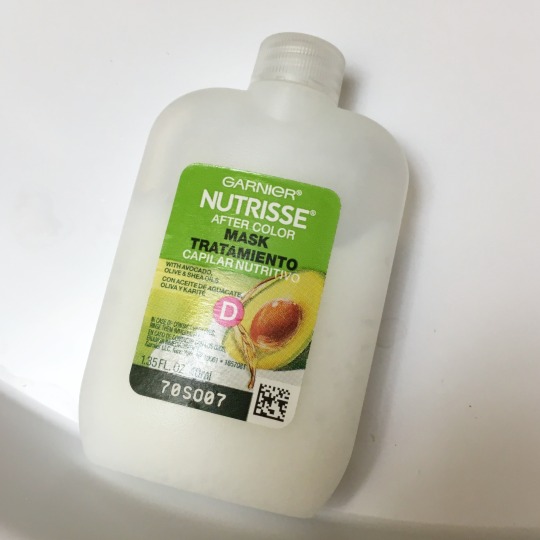
This little bottle of After Color Mask came with a bleaching kit that I got on deep clearance just to get to try out some 40Vol cream before committing to buying a big bottle.
Swirly Whirly's tail is still visibly a mess, but it finally feels nice and soft.
If you dye or bleach your hair and get these little bottles of hair mask, hold on to them. They'll do amazing things when you get a doll or pony with unusually or stubbornly dry hair.
Now if only Garnier sold this in big tubs.
18 notes
·
View notes
Text




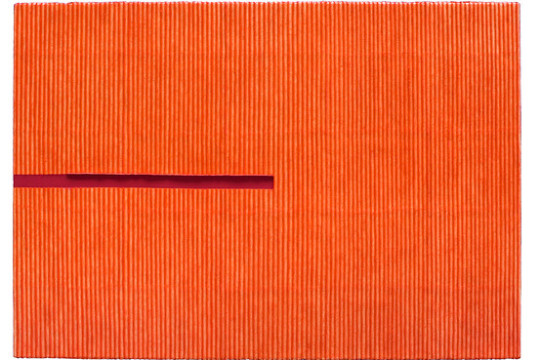




Park Seo-Bo, a key figure in South Korea’s Dansaekhwa Movement, died this month at the age of 91.
Born in 1931 in North Gyeongsang, a Japanese-occupied region of South Korea, to a family of eight children, he pursued training in traditional painting at Hongik University in Seoul. In 1950, his education was interrupted when he was drafted to serve in the Korean War.
“There was no food, no job opportunity, everything had gone back to ashes; all conventional values and ideas were laid naked and bare.” the artist said in a 2008 interview with the New York Times about the affects of war on him and his peers. He looked at painting as self-referential. “For me, painting has become a mere tool and method to cleanse and purify myself,” he said.
Park Seo-Bo is one of the leading figures in contemporary Korean art, widely acknowledged as the father of the ‘Dansaekhwa’ movement. Encompassing works from the 1970s to this year, this exhibition at White Cube West Palm Beach serves as an introduction to Park’s influential practice, as well as being the first opportunity to see his work in the US since it was shown at the Solomon R Guggenheim Museum in 2019.
A series of vividly coloured ceramic works made in the past year reveal an artist continuing to innovate into his nineties. In collaboration with a master ceramicist’s studio, Park has worked with wet clay in a similar manner as he has previously when he is manipulating the wet pulp of hanji paper, a medium he uses in other works. For this group of works, successive layers of wet clay slip are pinched and pushed line by line into long, parallel ridges, and, after firing and sanding, contrasting pigments are then carefully applied to the furrows and peaks of the fired surface. This latest evolution of technique and introduction of a new material is true to the energetic, naturalistic materiality and tactility that characterises Dansaekwha.
Park’s use of traditional Korean hanji paper, hand-made from mulberry bark, an earlier innovation dating from the 1980s, is represented here by exceptional large-works in subtle shades of grey-black and in blazing, vibrant red. The remarkable durability of hanji has ensured the survival of some of the most ancient scriptures of Buddhism in Korea and is integral to the structure of daily life, including being used in wall coverings and door panels. To Park, the material not only offered endless opportunities for experimentation but represented the connection between his work and the natural world which he had begun to regard as essential. When applied on to a canvas backing and soaked with water, the hanji reverted to a pulp that could be pushed and scraped into sculptural forms.
Park mixes pigments that further evoke connections to nature, as well as to personal memory. The black works have the deep, matte darkness of the charcoal and soot that built up in layers around the artist’s childhood hearth, while the vivid red was inspired by the maple forest in autumn foliage around Mount Bandai near Fukushima in Japan. Within the compositions, smooth rectangular areas or ‘windows’ of single colour offer a textural contrast and a ‘breathing hole’, to let the mind rest.
Several exceptional works from the 1970s testify to the epiphany that was to prove so formative to the development of Korean minimalism or ‘Dansaekwha’. Park calls these ‘Myobop’, a word taken from the Chinese characters ‘to draw’ and ‘a method’, which has been translated by the French term ‘Écriture’ (writing). Centring on an exploration of drawing within painting and on the union of action and spirit, they reflect a consistent approach, one that is inextricably linked to time, space and material; concepts that underpin all of Park’s practice. In these works, mark-making becomes akin to breathing and emptiness is achieved through reduction, a process that Park has termed “forgetting the self”. Executed within a single sitting, harnessing an energy flow through meditative action, they combine technical skill with mental focus, within a defined period of time. This method reflects that, for Park, the making of art is rooted in a spiritual methodology, drawing on Confucian, Taoist and Buddhist philosophy as well as the Korean tradition of calligraphy.
18 notes
·
View notes
Text
Beauty Brands USA: Revolutionizing Skincare with Sokörpe’s Compact Intelligent Skincare & Body Care Machine
The beauty and wellness industry is constantly evolving, with new technologies and products emerging to meet the ever-growing demand for advanced skincare and body care solutions. Among the frontrunners in this industry, Beauty Brands USA stands out as a leader in providing innovative, high-quality equipment to aesthetic professionals. As the exclusive distributor of Sokörpe’s Compact Intelligent Skincare & Body Care Machine in the United States, Beauty Brands USA offers a transformative tool that promises to elevate the standards of skincare and body care services. In this comprehensive article, we explore the features, benefits, and impact of this revolutionary machine, along with insights into why Beauty Brands USA is the preferred partner for skincare professionals.
Key Features and Technologies
Seven Treatment Heads: Each head is engineered to perform specific functions, enabling a personalized treatment experience for clients. Whether it’s anti-aging, acne treatment, or body contouring, the machine’s versatility is a major asset.
61 Treatment Programs: The extensive selection of programs allows practitioners to offer everything from basic facials to advanced treatments like Nano-Needle Mesotherapy and Endermomassage, ensuring comprehensive care for clients.
Nano-Needle Mesotherapy: This advanced technology delivers active ingredients deep into the skin, promoting collagen production and skin rejuvenation. It’s an effective treatment for reducing wrinkles, fine lines, and skin sagging.
Endermomassage: Available in both small and large sizes, these tools effectively treat cellulite, stimulate collagen production, and enhance skin firmness. Given the lucrative cellulite reduction market, which is expected to grow significantly, this feature offers substantial revenue potential.
Oxybrasion: This gentle yet effective exfoliation method uses oxygen to remove dead skin cells and improve circulation, leaving the skin refreshed and radiant.
Full Spectrum LED Therapy: The machine includes the full range of LED lights, each offering specific benefits:
Red Light: Stimulates collagen production and reduces inflammation.
Blue Light: Targets acne-causing bacteria and reduces oil production.
Green Light: Evens out skin tone and reduces pigmentation.
Yellow Light: Improves circulation and reduces redness.
Purple, Orange, and White Lights: Each providing unique therapeutic benefits, from healing to skin revitalization.
The Beauty Brands USA Advantage
Exclusive Distribution and Quality Assurance
Beauty Brands USA prides itself on being the exclusive distributor of Sokörpe’s machine in the United States. This exclusivity ensures that practitioners are receiving a genuine, high-quality product, backed by the company’s rigorous quality control standards.
Comprehensive Support and Training
To maximize the benefits of Sokörpe’s machine, Beauty Brands USA provides extensive training and support. This includes initial setup guidance, detailed instructions on utilizing the machine’s various features, and ongoing support to help practitioners refine their techniques.
Marketing and Business Development Support
Understanding that successful implementation goes beyond just having the right equipment, Beauty Brands USA offers marketing and business development support. This includes providing promotional materials, training on effective marketing strategies, and tips for attracting new clients.
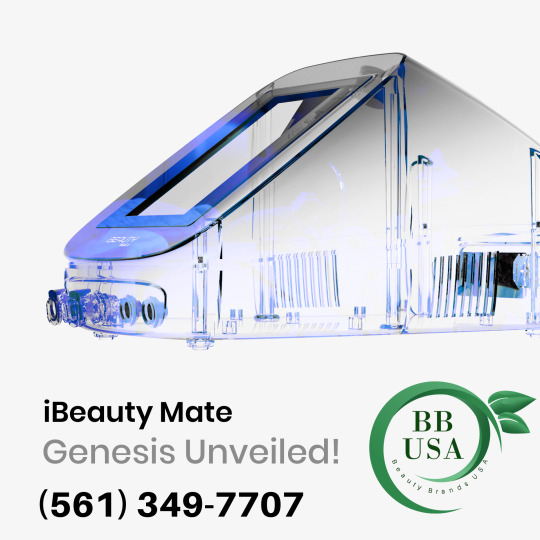
Financial Viability and Market Impact
Cost-Effective Investment
Sokörpe’s machine is competitively priced at $5,795.00 plus tax, making it an affordable option compared to other high-end devices. For instance, comparable machines for Endermomassage and Hydrafacial treatments can cost between $30,000 and $50,000, making Sokörpe’s machine a cost-effective investment for aesthetic professionals.
Revenue Generation Potential
The machine’s versatility allows practitioners to offer a wide range of treatments, each with significant earning potential. For example, Nano-Needle Mesotherapy sessions can cost between $250 and $600 each, with clients typically requiring multiple sessions. This can quickly lead to substantial revenue growth, with some practitioners reporting monthly earnings of up to $50,000.
Clinical Efficacy and Safety
Proven Results
Clinical studies have demonstrated the effectiveness of the technologies used in Sokörpe’s machine. For instance, LED therapy has been shown to reduce acne, stimulate collagen production, and improve skin elasticity. Similarly, Nano-Needle Mesotherapy and Endermomassage have proven effective in skin rejuvenation and cellulite reduction.
Safety Profile
Safety is a paramount concern in aesthetic treatments. Sokörpe’s machine is designed with safety in mind, featuring settings and protocols that ensure safe operation. This makes it suitable for a wide range of clients, including those with sensitive skin.
Real-World Success Stories
Case Studies and Testimonials
Numerous skincare professionals across the United States have integrated Sokörpe’s machine into their practices, experiencing significant business growth and client satisfaction. Testimonials often highlight the machine’s versatility, ease of use, and the impressive results it delivers.
Market Expansion and Client Retention
With the ability to offer innovative treatments that are not widely available, practitioners can attract new clients and retain existing ones. The machine’s comprehensive treatment options also enable practitioners to provide personalized care, further enhancing client loyalty.
The Science Behind the Treatments
LED Therapy
LED therapy involves the use of different wavelengths of light to penetrate the skin at varying depths. This triggers biological processes that rejuvenate and repair the skin. Each wavelength, represented by a different color, offers specific benefits:
Red Light (630-700 nm): Promotes collagen production and accelerates healing.
Blue Light (405-420 nm): Kills acne-causing bacteria.
Green Light (515-525 nm): Reduces pigmentation and evens skin tone.
Yellow Light (570-590 nm): Improves circulation and reduces redness.
Purple, Orange, and White Lights: Offer additional benefits like healing and revitalization.
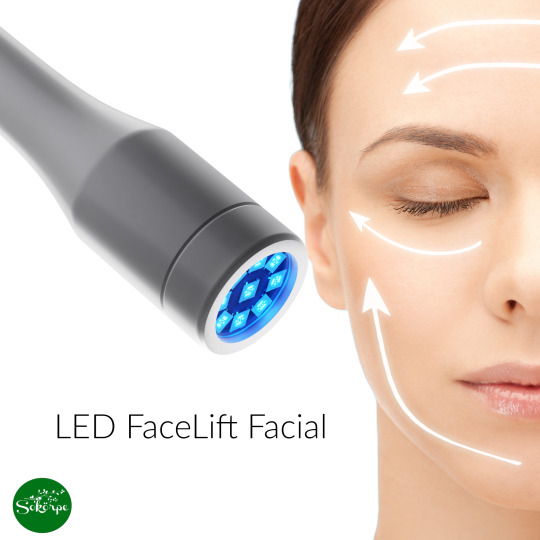
Nano-Needle Mesotherapy
This treatment involves the use of nano-sized needles to deliver active ingredients directly into the dermis. It is effective in stimulating collagen and elastin production, which helps reduce the appearance of wrinkles and improve skin texture.
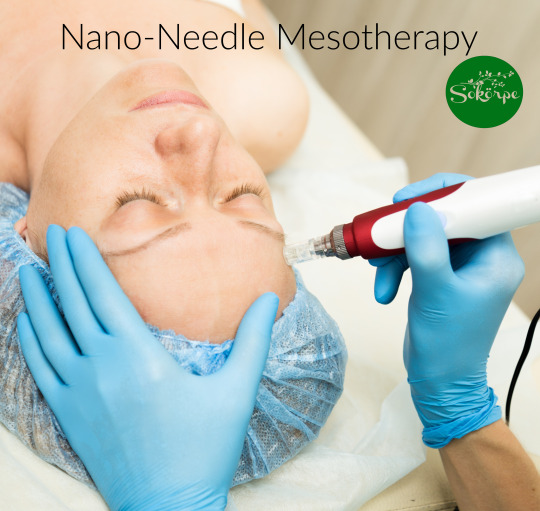
Endermomassage and Oxybrasion
Endermomassage uses mechanical stimulation to reduce cellulite and improve skin firmness. Oxybrasion, on the other hand, is a non-invasive exfoliation method that uses oxygen to cleanse and rejuvenate the skin.
Sokörpe’s Compact Intelligent Skincare & Body Care Machine, distributed exclusively by Beauty Brands USA, is a revolutionary device that offers unparalleled versatility and effectiveness. With its seven customizable treatment heads and 61 unique programs, it provides a comprehensive solution for skincare and body care needs. Beauty Brands USA’s commitment to quality, innovation, and support ensures that practitioners can maximize the potential of this incredible machine, transforming their businesses and providing exceptional results for their clients.
If you’re a skincare professional looking to elevate your practice, Sokörpe’s Compact Intelligent Skincare & Body Care Machine is the investment you need. With its affordability, extensive support, and proven results, it’s the key to unlocking new levels of success and client satisfaction. Don’t miss out on the opportunity to offer the latest and most effective treatments—partner with Beauty Brands USA and make Sokörpe’s machine a part of your practice today.

#skincare#skincare tips#skin care#beauty tips#glowing skin#natural#organic#radiantglow#radiantskin#glowing aesthetic#beautyproducts#beauty#Skincare Machine#Spa Equipment#skin treatment#body care#massage equipment#Endermomassage#Diamond Micro-Dermabrasion#Oxygen Infusion#Oxybrasion#Kinetic Massage#Nano-Needle Mesotherapy#Beauty Brands USA
3 notes
·
View notes
Text
A Neanderthal child with Down’s syndrome survived until at least the age of six, according to a new study whose findings hint at compassionate caregiving among the extinct, archaic human species.
Recent examination of a human fossil unearthed at the Cova Negra archaeological site in the Spanish province of Valencia found traits in the inner-ear anatomy which indicated Down syndrome, in the earliest-known evidence of the genetic condition.
The fossil, which preserves the complete inner-ear anatomy, was excavated in 1989 but its significance was not recognised until recently. It is a fragment of one of the two temporal bones – the right one – that help form the sides and base of the skull, protecting the brain and surrounding the ear canal.
While the researchers cannot be certain whether the fossil was that of a girl or a boy, they have nicknamed the Neanderthal child “Tina”.
Tina’s combination of inner-ear abnormalities is known only in people with Down’s syndrome.
“The pathology which this individual suffered resulted in highly disabling symptoms, including, at the very least, complete deafness, severe vertigo attacks and an inability to maintain balance,” said Mercedes Conde-Valverde, a palaeoanthropologist at the University of Alcalá in Spain, lead author of the study, published in the journal Science Advances.
“Given these symptoms, it is highly unlikely that the mother alone could have provided all the necessary care while also attending to her own needs. Therefore, for Tina to have survived for at least six years, the group must have continuously assisted the mother, either by relieving her in the care of the child, helping with her daily tasks, or both,” Conde-Valverde added.
Among other pathologies, there were abnormalities in the semicircular canals – three small tubes that govern balance and sense head position – and a reduction in the size of the cochlea, the part of the inner ear involved in hearing.
The fossil’s precise age has not been determined, but Conde-Valverde noted that the presence of Neanderthals at the Cova Negra site has been dated to between 273,000 and 146,000 years ago.
Homo neanderthalensis, as Neanderthals are formally called, were more robustly built than Homo sapiens and had larger brows. They lived from about 430,000 years ago to roughly 40,000 years ago. Previous research has shown that Neanderthals were intelligent, and created art, pigments, symbolic objects and perhaps a spoken language, as well as utilising complex group hunting methods.
They disappeared relatively soon after our species spread into their territory.
Previous evidence of Neanderthals caring for their sick and injured prompted a debate over whether this was motivated merely by expectations of reciprocal behaviour or by genuine compassion.
“For decades, it has been known that Neanderthals cared for and looked after their vulnerable companions,” Conde-Valverde said. “However, all known cases of care involved adult individuals, leading some scientists to believe that this behaviour was not genuine altruism but merely an exchange of assistance between equals.
“What was not known until now was a case of an individual who had received extra-maternal care from birth, even though the individual could not reciprocate. The discovery of the Cova Negra fossil supports the existence of true altruism among Neanderthals.”
Archaeological evidence at Cova Negra indicates the site was occupied for short periods at a time by small groups of Neanderthals – hunter-gatherers who roamed the landscape in search of food and other resources. Tina’s age at death, based on the maturation state of certain inner-ear structures, shows unusual longevity for a child in such circumstances with a condition known for intellectual disability and developmental delays.
“The survival of this child, beyond the period of breastfeeding, implies group caregiving, probably more extended than parental caregiving, typical of a highly collaborative social context among the members of the group. Otherwise, it is very difficult to explain the survival of this individual up to the age of six years,” said Valentín Villaverde, a co-author of the study and an emeritus professor of prehistory at the University of Valencia.
Conde-Valverde said: “The discovery of Tina represents the oldest known case of Down’s syndrome and demonstrates that the diversity observed in modern humans was already present in prehistoric times. This finding ensures that the story of human evolution includes us all.”
#history#prehistory#early humans#neanderthals#disability#intellectual disability#down syndrome#deafness#family#children#parenting#psychology#sociology#compassion#spain#valencia#cova negra
3 notes
·
View notes
Text








Lucas Arruda’s paintings for Assum Preto at David Zwirner capture moments in time that beckon you to look closer. On his Instagram is a photo of Agnes Varda with a quote that reads “If we opened people up, we’d find landscapes”. Standing in front of these paintings allows the viewer to contemplate Arruda’s inner landscapes as well as their own.
From the gallery-
“Assum Preto” continues Arruda’s investigations into the painted medium and its ability to serve as an evocative and transcendental conduit for the unveiling of light, memory, and emotion. The exhibition is titled after a species of blackbird native to eastern Brazil—whose mundane birdsong, according to local tradition, is said to transform into a beautiful melody if the bird’s eyesight has been shaded. As the artist explains: “It’s as if, when the bird has everything in sight, and is full of information and distractions, it can’t organize itself. Only when it’s no longer surrounded by images, can it organize everything in its head. In a certain way, I think this has to do with light.… For me, light is related to remembering.” In the works on view, light takes on a multitude of forms, surfacing in various physical, ideographical, and affective manifestations.
The exhibition is primarily composed of new paintings from Arruda’s established body of seascapes, junglescapes, and abstract monochromes; together, these works bring about a complex understanding of landscape as a product of a state of mind rather than a depiction of reality. The works on view are notable for their fogged colors—exploring subtle but intricate variations within a single hue—that range from dense reds to ethereal and almost intangible veils of white. For the monochromes, Arruda adds layer upon layer of pigment to pre-dyed raw canvas in an attempt to replicate its tinted hue in paint, methodically returning to each work for weeks or even months on end until the composition slowly builds into a hazy and ever-shifting wall of light.
The seascapes and junglescapes, on the other hand, are made on prepared surfaces using a reductive process whereby the impression of light is attained through the subtraction of pigment. Devoid of specific reference points, Arruda’s seascapes are all grounded only by their thin horizon lines. Above and below this border, charged atmospheric conditions engage further dichotomies between sky and earth, the nebulous and the solid, the psychic and the visual. The jungles, by contrast, dwell in verticality; their genesis lies in the artist’s formative memories of the verdant foliage outside his bedroom window. For Arruda, the quasi-mythical scenery of the Brazilian rainforest coaxes out tensions between reality and human imagination. Towering and impenetrable, yet containing a sense of the infinite that surpasses its physical bounds, in Arruda’s work the jungle becomes a site of power and enlightenment as much as it is a harbinger of darkness and uncertainty—a place where one can be lost to the world and find themselves again.
As curator Lilian Tone writes: “[Arruda’s] paintings suggest a tenuous, fugitive, and mediated relation to nature as that which informs an aesthetic language. As viewers, we tend to make sense of the slightest mark within an open field, to immediately perceive a horizontal line as a horizon line, to create clouds from a change in direction of brushstrokes, and to perceive ground from a thick impasto. Arruda makes paintings we experience as at once beyond abstraction and yet before representation.”
In “Assum Preto”, Arruda debuts a group of small-scale, semi-abstract paintings that are constructed from a lexicon of symbolist motifs, marking a new turn in the artist’s practice while also harking back to the planar and architectonic forms that characterize his early oeuvre. In these works, he takes visual cues from the geometries and rich colorscapes found in the Brazilian modernist paintings of José Pancetti (1902–1958), Alfredo Volpi (1896–1988), and Amadeo Luciano Lorenzato (1900–1995). Arruda handles his brush lightly but with intense control, creating clouds and thickets of markings that delicately carve through the painted surface of the canvas in a manner recalling the textures and physicality of intaglio printmaking processes. Potent and open-ended, the symbols and motifs that populate these compositions—darkly brewing storms, empty canoes, and strings of outdoor lights—visualize the themes that permeate Arruda’s body of paintings, including the artist’s own dreams, experiences, and intuitions, through the lens of the sacred and the surreal. The images shift in and out of focus, as if hovering at the precipice of memory itself.
Additionally featured is an example of Arruda’s site-specific light installations. These works comprise a pair of vertically balanced rectangles rendered directly on the gallery wall—the top one created through a light projection and the bottom one physically applied with paint—thus translating the genre of landscape into its most elemental form.
This exhibition closes 6/15/24.
#Lucas Arruda#David Zwirner#Painting#Art#NYC Art Shows#Art Shows#Assum Preto#Chelsea Art Galleries#Chelsea Art Shows#David Zwirner Gallery#Inner Landscape#Jungle#Landscape Painting#Landscapes#New York Art Shows#Night Sky#Agnes Varda
5 notes
·
View notes
Text
Achieve Smooth Skin and Clear Ink in East London
Achieving flawless, smooth skin and removing unwanted tattoos are two popular beauty goals for many people today. With advances in cosmetic treatments, achieving both is now easier, safer, and more effective than ever before. For residents seeking top-quality services in the area, understanding the options for Laser Hair Removal East London and Tattoo Removal Dagenham is the first step towards their transformation journey.
Why Choose Laser Hair Removal in East London
In recent years, laser hair removal has become a trusted solution for those tired of traditional methods like waxing, shaving, or threading. The technology behind laser treatments has advanced to ensure a more precise, painless, and long-lasting result. Choosing Laser Hair Removal East London means you are opting for an effective and efficient way to achieve hair-free skin with minimal discomfort.
Clinics in East London now use state-of-the-art lasers that target hair follicles directly without damaging the surrounding skin. This precision not only provides better results but also reduces the risk of irritation and side effects. Whether you are looking to treat small areas such as the upper lip or larger areas like the back and legs, modern clinics offer customized treatment plans to suit your individual needs and skin type.
Another key advantage of laser hair removal is the time and money saved in the long run. Instead of continually spending on razors, waxing appointments, or depilatory creams, a few sessions of laser treatment can lead to permanent hair reduction. In a bustling and stylish city like East London, where personal grooming is important, investing in laser hair removal ensures that you always feel confident and ready for any occasion.
The Art of Tattoo Removal in Dagenham
Tattoos often represent a personal journey, memory, or aesthetic choice. However, as life moves forward, some tattoos may no longer align with who we are. Fortunately, advancements in laser technology have also transformed the tattoo removal process, making it more accessible and effective than ever. Those searching for Tattoo Removal Dagenham services will find that modern clinics offer innovative techniques that minimize discomfort while maximizing results.
Tattoo removal works by targeting the ink particles beneath the skin with high-intensity light beams. These beams break down the pigment into smaller particles, which are then naturally flushed out by the body's immune system. Each session gradually fades the tattoo until it is no longer visible, allowing the skin to return to its natural state.
Choosing a skilled technician for tattoo removal is crucial. The professional must understand different ink colors, tattoo depths, and skin types to tailor the treatment accordingly. Dagenham clinics pride themselves on offering personalized consultations and treatments, ensuring that each client receives the best possible care and outcome. Whether you want complete removal or just lightening for a cover-up, the options available today are safer and more sophisticated than ever before.
Combining Skin Goals: Hair and Tattoo Removal
For individuals looking to refresh their appearance entirely, combining both services can be a game-changer. Undergoing Laser Hair Removal East London treatments while also planning Tattoo Removal Dagenham sessions allows you to achieve comprehensive skin rejuvenation.
Careful planning and timing are important when combining these treatments. Professionals typically recommend completing tattoo removal sessions before starting laser hair removal in the same area to avoid over-stressing
the skin. Both procedures require a commitment to aftercare, such as avoiding sun exposure and keeping the treated area moisturized to ensure optimal healing.
Patients who undergo both processes often report a boost in confidence, feeling more in tune with their current self-image. Whether you are preparing for a special event, a career move, or simply want to feel more comfortable in your skin, investing in expert care will yield rewarding results.
Whether you are seeking to enjoy the benefits of Laser Hair Removal East London or aiming for a fresh start with Tattoo Removal Dagenham, expert clinics in the area offer advanced solutions tailored to your unique needs.
0 notes
Text
Pros and Cons of Laser Hair Treatment for Permanent Hair Removal

Laser hair treatment has become a popular choice for individuals seeking a long-term solution to unwanted body and facial hair. It offers the promise of permanent hair reduction, but like any cosmetic procedure, there are both benefits and drawbacks to consider before deciding if it's the right choice for you.
Pros of Laser Hair Treatment:
Long-Term Results: One of the primary advantages of laser hair treatment is its ability to offer long-term or even permanent hair reduction. After a series of treatments, many individuals experience significant and lasting results with minimal hair regrowth.
Precision and Speed: Laser hair treatment is highly precise, targeting hair follicles without affecting the surrounding skin. It’s also a quick procedure, especially for larger areas like the legs or back, making it a convenient option for busy individuals.
Reduced Ingrown Hairs: Unlike shaving or waxing, laser hair treatment helps prevent the development of ingrown hairs, a common issue for people with coarse or curly hair.
Minimal Discomfort: Compared to traditional methods like waxing, laser hair treatment is relatively painless. Most patients describe the sensation as a slight tingling or a rubber band snap against the skin.
Cons of Laser Hair Treatment:
Multiple Sessions Required: While laser hair treatment offers long-term results, it typically requires several sessions for optimal effectiveness. This means a commitment of both time and money to complete the treatment plan.
Not Effective on All Hair Types: Laser hair treatment works best on individuals with light skin and dark hair, as the laser targets the pigment in the hair. Those with lighter hair or darker skin may not experience the same level of effectiveness.
Potential Side Effects: Some individuals may experience temporary side effects like redness, swelling, or irritation following the procedure. Though rare, more serious complications can occur if not performed correctly.
Cost: While it offers long-term savings compared to waxing or shaving, laser hair treatment can be an expensive option upfront, making it less accessible for some individuals.
For those looking to enhance their skin and hair treatments further, Dermis Oracle offers professional services in both Laser Hair Treatment and HydraFacial treatments, ensuring tailored, high-quality results that address your beauty and skincare needs.
0 notes
Text

The comprehensive guide for skin lightening supplements
The Skin lightening supplements are oral products designed to lighten skin complexion from within. They typically contain ingredients like glutathione, vitamin C, and other antioxidants. Advocates believe these supplements can even out skin tone, reduce dark spots, and provide a radiant glow. However, their effectiveness and safety can vary, so it's essential to research and consult a dermatologist before use.
#Skin brightening pills#Glutathione supplements#Vitamin C for skin lightening#Natural skin whitening remedies#Melanin reduction supplements#Skin glow tablets#Hydroquinone-free lighteners#Skin pigmentation pills#Anti-melanogenesis supplements#Herbal skin lightening capsules#Safe skin brightening methods#Topical vs. oral skin lighteners#Benefits of skin lightening supplements#Side effects of skin whitening pills#Natural ingredients for skin radiance
1 note
·
View note
Text
Maximising Your Laser Results: Preparation, Aftercare, and Realistic Expectations
Hello again! If you’ve been following along, you’ll know that LBHR is one of the most popular treatments for managing excessive hair growth caused by PCOS. But as we dive deeper into this process, it’s important to recognise that booking your consultation is only the first step. Preparation, aftercare, and understanding how to maintain your results are key, especially since, for many of us with PCOS, the typical six sessions recommended for most people will not be enough (Liew, 2002).
Preparation for LBHR: Setting Yourself Up for Success
Avoiding Prolonged/Excessive Sun Exposure: One of the most important pre-session steps is to avoid direct sun exposure. Tanned skin can increase the risk of burns or pigmentation changes due to the laser (Alamri et al., 2023).
Shaving Before Treatment: Make sure to shave the treatment area a day before your session—this allows the laser to effectively target the root of the hair follicle without the hair shaft getting in the way (Mustafa & Jaafar, 2015).
Avoid Waxing or Plucking: It’s crucial not to remove the hair from the root (like with waxing or plucking) before your laser sessions, as the laser needs the follicle intact to adequately target the melanin within the hair follicle.
Check Medications and Skincare Products: Some medications or topical skincare products, known as ‘photosensitisers,’ can increase your skin’s sensitivity to the laser. Always inform your clinician about your prescriptions and skincare routine, even if it seems minor (Kerstein et al., 2014).
Aftercare: Protecting Your Skin for Optimal Healing
Cool Down: During your session, cooling methods like a cold air attachment or cooling gel may be used to soothe the skin. At home, continue to keep the area cool—use ice packs or aloe vera gel to relieve any redness or irritation. This is particularly important for darker skin tones, as clinical endpoints (like redness and swelling) may appear later (Vaidya et al., 2023).
Moisturise Regularly: Keep the treated area moisturised using a thick, emollient-type moisturiser to help protect the skin from excessive water loss. Avoid any products with ingredients like retinol or AHAs/BHAs for 2-3 days post-treatment, as these can irritate the more sensitive, lasered skin (Vaidya et al., 2023).
Avoid Sun Exposure: Just like before your treatment, protecting your skin from the sun afterward is essential. Use a broad-spectrum SPF 50+ to prevent hyperpigmentation (Hamzavi et al., 2020).
Gentle Cleansing: Stick to mild cleansers, and avoid hot showers, saunas, or strenuous workouts that cause sweating for at least 24-36 hours post-treatment. Sweating can trap moisture in swollen hair follicles, potentially leading to rashes or infections (Arsiwala & Majid, 2019).
Maintaining Results and Understanding the Process
While LBHR offers long-term reduction in hair growth, it’s important to remember that this journey is a process—it’s not an instant fix. For those with PCOS, the typically recommended six sessions are often not enough, and you’ll likely need additional treatments to see significant changes. Here’s why:
Hormonal Impact: With PCOS, fluctuating hormone levels continuously stimulate hair growth, which means more than six sessions are often necessary to achieve lasting results. Each session weakens the hair follicles further, which is why consistency is key. Remember, if you’re waxing between sessions, you’re removing the root that the laser targets, so it’s best to stick with shaving.
Regular Treatments: Consistent treatments, spaced every 4-6 weeks, are essential for targeting hair during its active growth phase. While this may feel frequent at first, patience and consistency are what lead to noticeable results. You’ll likely notice slower hair growth, and the hair that does return will be thinner and sparser. In my experience treating patients with PCOS, most clients start seeing these effects around the 6-7 session mark, with hair shedding naturally after it weakens.
Maximising My Results: What Else Should I Do?
Stay on Top of Hormonal Management: Since PCOS is closely linked to hormone imbalances, working with a healthcare provider to manage your hormones—whether through medication or lifestyle changes—can enhance the effectiveness of your laser treatments. For me personally, hormonal management became much more controllable after I was prescribed Metformin by a specialist. While I can’t recommend specific treatments, I strongly encourage seeing a medical professional to keep your PCOS under control.
Choosing the Right Clinic/Clinician: Not all lasers are created equal. Ensure you select a clinic with advanced technology and experience in treating individuals with PCOS, especially across diverse skin tones. You may have heard that darker hair on lighter skin achieves quicker results, but modern laser modalities can effectively treat all skin types. Regardless of your skin tone, as long as you have dark hair, there’s a suitable laser for you.
LBHR is a powerful tool for managing PCOS-related hair growth, but achieving the best results requires thoughtful preparation, diligent aftercare, and realistic expectations. With consistency and proper support, this journey can lead to significant, long-lasting results. Don’t hesitate to consult with your healthcare provider to tailor your treatment plan, and always be patient with the process. By following these guidelines, you’ll be well on your way to maintaining and maximising your results
L 🤍
References
Alamri, G. E., Bondagji, M., Kinkar, L. I., Almasoudi, E., Fageeh, S. M., Asiri, L. G., & Bahashwan, E. (2023). Knowledge and attitude regarding the use of sun protection to prevent adverse laser events among the general population in Saudi Arabia: A cross-sectional study. Cureus. https://doi.org/10.7759/cureus.50157
Arsiwala, S., & Majid, I. (2019). Methods to overcome poor responses and challenges of laser hair removal in dark skin. Indian Journal of Dermatology, Venereology and Leprology, 85(1), 3. https://doi.org/10.4103/ijdvl.ijdvl_1103_16
Hamzavi, I., Fatima, S., Braunberger, T., Mohammad, T., & Kohli, I. (2020). The role of sunscreen in melasma and postinflammatory hyperpigmentation. Indian Journal of Dermatology, 65(1), 5. https://doi.org/10.4103/ijd.ijd_295_18
Kerstein, R. L., Lister, T., & Cole, R. (2014). Laser therapy and photosensitive medication: A review of the evidence. Lasers in Medical Science, 29(4), 1449-1452. https://doi.org/10.1007/s10103-014-1553-0
Liew, S. H. (2002). Laser hair removal. American Journal of Clinical Dermatology, 3(2), 107-115. https://doi.org/10.2165/00128071-200203020-00004
Mustafa, F. H., & Jaafar, M. S. (2015). Shaving area of unwanted hair before laser operation is useful in cosmetic procedure: A simulation study. Journal of Dermatology & Dermatologic Surgery, 19(1), 36-42. https://doi.org/10.1016/j.jssdds.2013.10.001
Spritzer, P. M., Marchesan, L. B., Santos, B. R., & Fighera, T. M. (2022). Hirsutism, normal androgens and diagnosis of PCOS. Diagnostics, 12(8), 1922. https://doi.org/10.3390/diagnostics12081922
Vaidya T., Hohman, M. H., & Kumar, D. D. (2023). Laser Hair Removal. StatPearls. https://www.ncbi.nlm.nih.gov/books/NBK507861/
6 notes
·
View notes
Text
Glow with Confidence: Dr. Nargis Anshari – The Best Cosmetologist in Katni
When it comes to enhancing your natural beauty and caring for your skin, choosing the right cosmetologist is crucial. For the residents of Katni, the search for expert skin and beauty care ends with Dr. Nargis Anshari, widely regarded as the best cosmetologist in the region.

About Dr. Nargis Anshari
Dr. Nargis Anshari is a highly skilled and professionally trained cosmetologist known for her expertise in advanced skincare, aesthetic treatments, and non-surgical beauty procedures. With a passion for transforming lives through dermatological care, she offers customized solutions tailored to every individual’s skin type and concern.
Specialized Services Offered
Dr. Nargis Anshari,provides a wide range of cosmetic and skin care treatments, including:
Advanced Acne & Scar Treatment
Anti-Aging Solutions (Botox, Fillers, PRP Therapy)
Laser Hair Removal
Skin Whitening & Brightening
Pigmentation & Dark Spot Correction
Chemical Peels & Medi-Facials
Hair Fall Treatment & Regrowth Therapies
Stretch Mark Reduction
Tattoo & Mole Removal
Customized Skin Care Plans
Why Patients Trust Dr. Nargis Anshari
✅ Highly experienced and certified ✅ Use of FDA-approved equipment and materials ✅ Safe, painless, and effective treatment methods ✅ One-on-one consultation and personalized care ✅ Hygienic and patient-friendly clinic environment ✅ Trusted results with visible improvement
Clinic Information Dr. Nargis Anshari,
📍 Location: DR NARGIS ANSARI, TIT COLONY, opp. BJP OFFICE, BARGAWAN, Katni, Madhya Pradesh 483501
📞 Contact for Appointment: 09109577822
🌐 Online Consultations Available - https://www.drnargis.com/
🕒 Clinic Timings: Monday to Sunday - 10 am–9 pm
Rediscover Your Beauty
Whether you’re looking to treat a specific skin condition or simply want to rejuvenate your appearance, Dr. Nargis Anshari offers trusted, safe, and scientific solutions that deliver real results. With a growing number of satisfied clients from Katni and nearby areas, she continues to set the gold standard in cosmetology care.
Book an appointment with Dr. Nargis Anshari today and take the first step toward radiant, confident skin.
0 notes
Text
Discover the Best Laser Skin Treatment Specialist in Hyderabad
When it comes to enhancing your skin’s glow and treating various skin concerns, choosing the right laser skin treatment specialist in Hyderabad is crucial. From acne scars to unwanted pigmentation or aging signs, laser technology can work wonders when performed by certified professionals. If you're searching for advanced solutions and excellent care, you're in the right place!
Why Choose Laser Skin Treatments?
Laser skin treatments have become one of the most effective and safest methods to rejuvenate the skin. With advancements in cosmetic technology, treatments are now tailored to suit individual skin types and concerns. Whether you're battling fine lines, acne scars, or sun damage, opting for laser skin treatment in Hyderabad can offer lasting results with minimal downtime.
A reputable laser skin treatment clinic in Hyderabad will ensure that the latest FDA-approved equipment is used, giving you both safety and satisfaction. A knowledgeable specialist will be with you throughout the entire process, from the first consultation to the aftercare.
What Can You Expect?
Before starting your journey with a laser skin treatment specialist in Hyderabad, a detailed skin analysis is performed. Based on your skin tone, type, and the issue you're targeting, a customized treatment plan is crafted. This ensures optimal results with minimal side effects.
Treatments like laser treatment for face in Hyderabad can address a wide range of skin concerns including uneven tone, open pores, and dullness. The process is non-invasive, and most people resume their daily routine shortly after the session.
Choosing the Right Clinic
With so many options available, it’s important to select a trusted name in the industry. A well-known laser skin clinic in Hyderabad will always prioritize your skin's health while offering premium care.
Sriroop Cosmetic Clinics stands out as one of the leading names in the city. Known for personalized care and advanced technology, Sriroop combines science with aesthetics to deliver natural-looking results. The team, led by certified dermatologists and cosmetic surgeons, ensures your safety and satisfaction at every step.
Their mission is to bring world-class skin care treatments closer to home. From laser hair removal to scar reduction and anti-aging procedures, they offer a comprehensive suite of services that are effective and affordable. You can learn more about their services by visiting Sriroop Cosmetic Clinics.
Benefits of Laser Skin Treatments
Quick and minimally invasive
Targets deeper layers of skin for long-term results.
Suitable for various skin types and conditions
Boosts collagen production naturally
If you’re considering laser skin treatment in Hyderabad, it's essential to consult a qualified professional for the best outcome.
Conclusion
Choosing a skilled laser skin treatment specialist in Hyderabad can significantly enhance your skin’s health and appearance. Whether you're looking to brighten your complexion or treat deeper skin concerns, a reputable laser skin clinic in Hyderabad can help you achieve your goals. Today, start down the path to gorgeous skin!
#laser skin treatment specialist in hyderabad#laser skin treatment in hyderabad#laser skin treatment clinic in hyderabad#laser skin clinic in Hyderabad#laser treatment for face in hyderabad
0 notes
Text
Comprehensive Guide to Advanced Aesthetic Treatments in Delhi: Laser Hair Removal, Pigmentation Treatment, and Gynecomastia Surgery
Delhi is not only the capital of India but also a medical tourism hub for advanced aesthetic and cosmetic procedures. People from around the world visit Delhi for world-class treatments at affordable prices. Among the most sought-after treatments are laser hair removal, pigmentation treatment, and gynecomastia surgery. These procedures have gained immense popularity due to their lasting results, minimal downtime, and non-invasive nature.
In this article, we will explore these treatments in depth, covering everything you need to know, including costs, procedures, and the best options available in Delhi.
1. Laser Hair Removal in Delhi: A Permanent Solution to Unwanted Hair
Unwanted body hair is a concern that many individuals face, and traditional methods like shaving, waxing, and plucking often provide only temporary results. Laser hair removal has become a game-changer, offering a permanent solution to remove hair from various parts of the body.
What is Laser Hair Removal?
Laser hair removal is a non-invasive cosmetic procedure that uses focused light beams (lasers) to target and destroy hair follicles. The process prevents future hair growth, leaving the skin smooth and hair-free.
How Does Laser Hair Removal Work?
The laser emits light that is absorbed by the pigment (melanin) in the hair. The energy from the laser is converted into heat, which damages the hair follicle, inhibiting or delaying future hair growth. This process can be used on almost all areas of the body, including the face, underarms, arms, legs, back, and bikini area.
Benefits of Laser Hair Removal
Long-lasting results: Unlike shaving and waxing, laser hair removal offers a more permanent reduction in hair growth.
Precision: Lasers can precisely target dark, coarse hairs while leaving the surrounding skin unharmed.
Speed: Each pulse of the laser takes only a fraction of a second and can treat many hairs simultaneously.
Minimal discomfort: The procedure is relatively painless with minimal side effects, making it a preferable option for many.
Why Choose Laser Hair Removal in Delhi?
Delhi is home to many state-of-the-art clinics and experienced dermatologists offering laser hair removal near me. The cost of laser hair removal is significantly lower in Delhi compared to many Western countries, making it an attractive option for people looking for affordable, effective hair removal solutions.
Laser Hair Removal Costs in Delhi
The cost of laser hair removal near me can vary based on the size of the area treated, the clinic's reputation, and the number of sessions required. Typically, the prices are as follows:Area TreatedPrice per Session (INR)Upper Lip₹800 – ₹1,500Underarms₹1,200 – ₹2,000Full Arms₹2,500 – ₹4,500Full Legs₹4,000 – ₹7,000Full Body₹15,000 – ₹25,000
Most clinics offer package deals for laser hair removal near by me that can significantly reduce the overall cost of treatment.
What to Expect During the Treatment
Before the procedure: Your dermatologist will assess your skin type and hair growth patterns. They may also recommend shaving the treatment area to ensure optimal results.
During the procedure: You may feel a mild sensation, like the snapping of a rubber band, as the laser pulses. However, the procedure is generally well-tolerated.
After the procedure: Most patients experience minor redness or swelling, but this typically subsides within a few hours.
2. Pigmentation Treatment in Delhi: Get Rid of Dark Spots and Uneven Skin Tone
Pigmentation issues, such as dark spots, sun damage, and melasma, are common skin concerns that can affect anyone. While there are many treatments available, pigmentation treatment in Delhi is renowned for its effectiveness and affordability.
What Causes Pigmentation?
Pigmentation occurs when the skin produces excess melanin, the pigment responsible for the color of the skin, hair, and eyes. The causes of pigmentation include:
Sun exposure: UV rays stimulate melanin production, leading to dark spots and freckles.
Hormonal changes: Pregnancy, birth control, and hormone replacement therapies can cause melasma or "pregnancy mask."
Post-inflammatory hyperpigmentation (PIH): After acne or injury, the skin may darken as part of the healing process.
Types of Pigmentation Treatment
Laser Treatment for Pigmentation
Q-Switched Nd:YAG Laser: This type of laser is particularly effective in treating pigmentation, sunspots, and melasma by targeting melanin.
Fractional CO2 Laser: It works by stimulating collagen production and removing pigmented layers of skin.
Chemical Peels Chemical peels involve the application of exfoliating acids to remove the damaged skin's outer layers, revealing fresher skin underneath. They are effective in treating hyperpigmentation, sun damage, and acne scars.
Microneedling Microneedling uses tiny needles to create micro-injuries in the skin, stimulating collagen production and helping to fade pigmentation.
Topical Treatments Topical depigmentation creams containing ingredients like hydroquinone, retinoids, and vitamin C can lighten dark spots over time.
Why Choose Pigmentation Treatment in Delhi?
Delhi is home to some of the best dermatologists and skincare clinics in India. Whether you’re looking for pigmentation treatment near me or the best treatment for pigmentation on the face near me, you will find a variety of solutions that suit your skin type and condition.
Pigmentation Treatment Cost in Delhi
Treatment TypeCost per Session (INR)Q-Switched Laser₹2,000 – ₹5,000Chemical Peel₹1,500 – ₹3,000Microneedling₹4,000 – ₹8,000Full Face Pigmentation Plan₹10,000 – ₹25,000
Clinics offering pigmentation treatment near by me may provide packages that bundle different treatments together for enhanced results at a more affordable price.
What to Expect During Pigmentation Treatment
Before the procedure: Your dermatologist will analyze your skin and discuss the best treatment for your pigmentation.
During the procedure: Depending on the treatment, you may feel mild discomfort (especially with laser treatments or chemical peels).
After the procedure: Expect some redness, peeling, or dryness in the treated area, but this should subside within a few days.
3. Gynecomastia Treatment in Delhi: The Best Option for Male Chest Contouring
Gynecomastia refers to the development of enlarged male breasts, a condition that affects many men due to hormonal imbalances, weight fluctuations, or genetic factors. This can lead to self-consciousness, especially during physical activities or when removing clothes.
What is Gynecomastia Surgery?
Gynecomastia surgery is a cosmetic procedure that removes excess glandular tissue and fat from the chest area to create a flatter, more masculine contour. The surgery typically involves liposuction or excision, or a combination of both.
Who Can Benefit from Gynecomastia Surgery?
Men with enlarged breast tissue that has not improved with weight loss or exercise.
Individuals who experience psychological distress due to their appearance.
Why Choose Gynecomastia Treatment in Delhi?
Delhi is home to some of the best cosmetic and plastic surgeons who specialize in gynecomastia surgery in Delhi. Not only does the city offer affordable prices, but the quality of care and cutting-edge techniques are world-class.
Gynecomastia Surgery Cost in Delhi
Procedure TypeCost (INR)Liposuction Only₹45,000 – ₹75,000Gland Removal + Liposuction₹60,000 – ₹1,20,000Advanced Sculpting₹80,000 – ₹1,50,000
Best gynecomastia surgery in Delhi can be found at leading clinics, offering customized solutions based on individual needs.
What to Expect During Gynecomastia Surgery
Before the surgery: A consultation with the surgeon will assess the extent of the condition and determine the best approach (liposuction, excision, or a combination).
During the surgery: The procedure is usually performed under general anesthesia, and you will be sedated throughout the operation.
After the surgery: Recovery takes about 5-7 days, with post-operative compression garments to minimize swelling.
Conclusion: Achieving Your Desired Look in Delhi
Whether you’re looking for laser hair removal near me, seeking pigmentation treatment in Delhi, or exploring gynecomastia surgery options, Delhi offers world-class solutions tailored to your needs. The combination of affordable prices, highly skilled professionals, and advanced technology makes Delhi the perfect destination for aesthetic treatments.
Take the first step toward a more confident you—explore the many possibilities that these treatments offer and make an informed decision. With the right guidance and expert care, you’ll not only look your best but feel your best as well.
#cosmeticsurgerydelhi#health & fitness#dimplecreationindia#dimplesurgerydelhi#faceliftcostdelhi#faceliftsurgerydelhi#minifaceliftindia#youthfulappearancedelhi#healthcare#health tips
1 note
·
View note